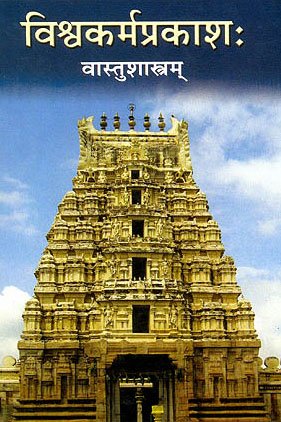Sacrificial rite: 1 definition
Introduction:
Sacrificial rite means something in Hinduism, Sanskrit. If you want to know the exact meaning, history, etymology or English translation of this term then check out the descriptions on this page. Add your comment or reference to a book if you want to contribute to this summary article.
In Hinduism
Vastushastra (architecture)
Source: Shodhganga: Elements of Art and Architecture in the Trtiyakhanda of the Visnudharmottarapurana (vastu)Sacrificial rites are denoted by the Sanskrit term Yajña and were employed by the people to connect themselves with deities.—In the Vedic Age, people practised to connect themselves with gods through the yajñas (“sacrificial rites”) by chanting the Vedic mantras or practicing penance. In the Vedic era, Agni is considered as the mediator between the deities and the devotees or sages. In the Viṣṇudharmottarapurāṇa it is clearly stated that the requirement of making of temple is most important in the Kaliyuga. Because, in the three other yugas i.e.,, Kṛta, Tretā and Dvāpara; people could realize the existence of Gods and had tried directly to connect themselves with the supreme spirit. But in the Kaliyuga it is totally impossible due to the growth of unlawful activities in the society.

Vastushastra (वास्तुशास्त्र, vāstuśāstra) refers to the ancient Indian science (shastra) of architecture (vastu), dealing with topics such architecture, sculpture, town-building, fort building and various other constructions. Vastu also deals with the philosophy of the architectural relation with the cosmic universe.
See also (Relevant definitions)
Partial matches: Rite.
Full-text (+296): Karmakanda, Ishti, Karmanga, Yajnakratu, Yajnakarman, Makhakriya, Irajyu, Yajnakriya, Karmakamdi, Makha, Vaishyasava, Vaitanastha, Yagakarman, Yajnanga, Yajnadharma, Anvarambhaniya, Vaisarjana, Vanahpatisava, Vanahpatiyaga, Karmavada.
Relevant text
Search found 87 books and stories containing Sacrificial rite; (plurals include: Sacrificial rites). You can also click to the full overview containing English textual excerpts. Below are direct links for the most relevant articles:
Jnaneshwari (Bhavartha Dipika) (by Ramchandra Keshav Bhagwat)
Verse 3.10 < [Chapter 3 - Karma-yoga]
Verse 3.13 < [Chapter 3 - Karma-yoga]
Verse 3.9 < [Chapter 3 - Karma-yoga]
The Sacrifices of Rajasuya, Vajapeya and Ashvamedha (study) (by Aparna Dhar)
Meaning and importance of the Vedic sacrifices < [Chapter 2 - Vedic Sacrifices described in the Śatapatha Brāhmaṇa]
Importance of the Brāhmaṇa literature < [Chapter 1 - A brief outline of the Brāhmaṇa Literature]
The role of the Seers and Man in General for obtaining the Sacrifice < [Chapter 3 - Political Importance]
The Agni Purana (by N. Gangadharan)
Chapter 374 - Contemplation (dhyāna)
Chapter 381 - The essence of the Bhagavadgītā (gītāsāra)
Chapter 383 - The Glorification of the Agnipurāṇa (āgneyapurāṇa-māhātmya)
Manusmriti with the Commentary of Medhatithi (by Ganganatha Jha)
Verse 2.143 < [Section XXV - Meaning of the Title ‘Ācārya’]
Verse 3.197 < [Section XI - Origin of the Pitṛs and the Mode of Worshipping them]
Verse 10.5 < [Section I - The Four Castes and their Purely Legitimate Progeny]
The Skanda Purana (by G. V. Tagare)
Chapter 5 - Performance of a Satra for Triśaṅku < [Section 1 - Tīrtha-māhātmya]
Chapter 25 - Greatness of Dvārakā, Gaṅgā, Gayā, Gomatī, Gītā, etc. < [Section 4 - Dvārakā-māhātmya]
Chapter 75 - Greatness of Yajñabhūmi < [Section 1 - Tīrtha-māhātmya]
Taittiriya Upanishad Bhashya Vartika (by R. Balasubramanian)